Foundation
Foundation Cracks: Safe or Serious?
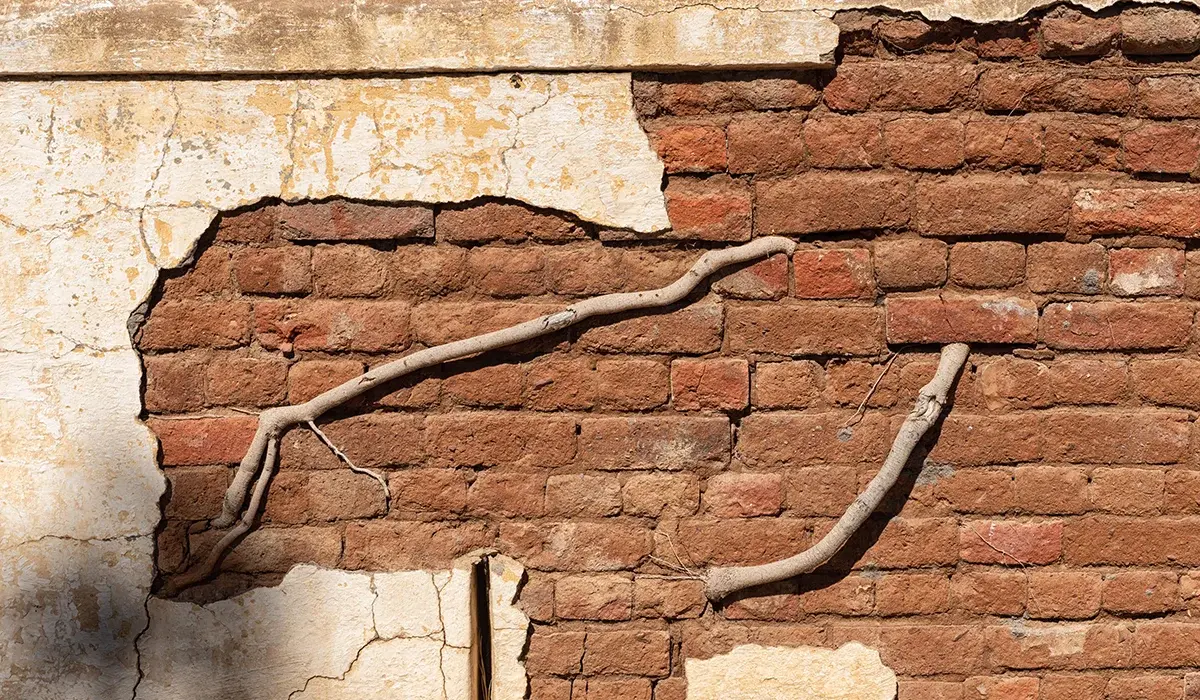
Foundation Cracks: How to Spot Warning Signs Before It’s Too Late
Cracks in your foundation can spark worry for any homeowner. While some are harmless, others signal serious structural concerns. Understanding what these cracks mean is the first step in protecting your home’s integrity and long-term value.
This guide explains the different types of cracks, what causes them, and Foundation Cracks Warning Signs you should never ignore. Identifying early red flags helps you prevent costly structural repairs down the line.
Understanding Foundation Cracks
A foundation crack is a visible break or fissure in your home’s concrete base or walls. These cracks may appear minor but can indicate deeper issues. Cracks range from hairline surface flaws to wide fractures that threaten your home’s stability.
Every homeowner must know which cracks are cosmetic and which are dangerous. Early action makes all the difference.
Types of Foundation Cracks
Foundation cracks fall into several categories. Each type gives insight into possible causes and repair needs.
Hairline Cracks
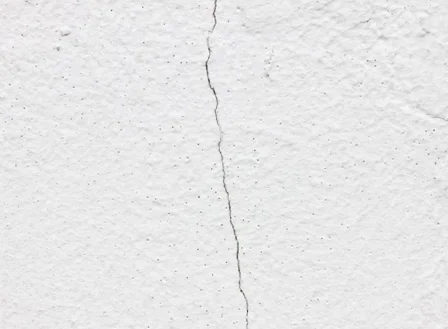
Courtesy of Renco
Hairline cracks are extremely thin—usually less than 1/8 inch wide. They form as concrete cures and settles naturally. While mostly harmless, it’s wise to monitor them for growth over time.
Vertical Cracks
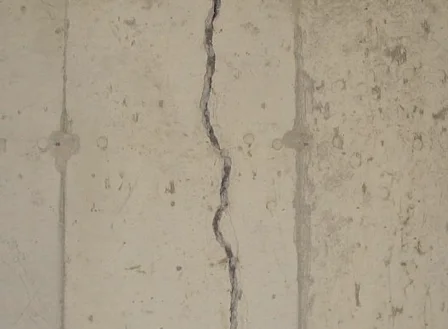
Courtesy of Renco
Vertical cracks usually result from normal settling. They run straight up and down the wall. Small vertical cracks may not require repair unless they widen at the top or bottom.
Horizontal Cracks
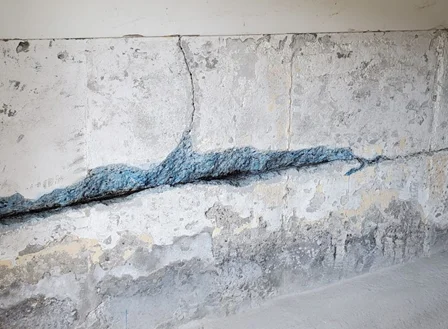
Courtesy of Renco
Horizontal cracks are more serious and may point to soil pressure pushing against your foundation. These cracks often lead to bowing or crumbling walls.
Diagonal Cracks
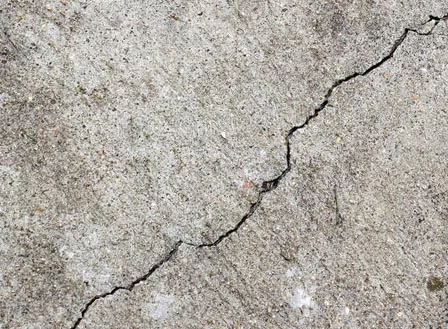
Courtesy of Renco
Diagonal cracks usually indicate uneven foundation settling. These often widen on one end and require immediate evaluation from a professional.
Signs Your Foundation Needs Urgent Attention
Some symptoms signal more than a cosmetic issue. If you notice these changes in your home, take them seriously.
Uneven Floors and Sticky Doors
Uneven flooring can point to a shifting foundation. If your marble rolls across the floor, foundation movement may be to blame. Sticky doors and misaligned windows often follow.
Gaps and Separations
Look for wall and ceiling gaps, or separation between the baseboards and floors. These are classic Foundation Cracks Warning Signs and should never be ignored.
Water and Moisture Intrusion
Moisture or water leaking through cracks is a problem. Dampness may cause mold growth or deeper structural decay. Wet cracks need sealing quickly.
How to Evaluate Foundation Cracks
Understanding a crack’s size and behavior helps determine whether it’s minor or a major concern.
Measure Width and Depth
Wider cracks—especially those exceeding 3/16 inch—require attention. Deeper cracks or those with vertical displacement could indicate structural failure.
Monitor Crack Movement
Mark cracks with a pencil or use crack monitors. If the crack expands over time, contact a foundation specialist immediately.
Call a Structural Engineer
When in doubt, hire a professional. Experts use tools like thermal imaging and moisture meters to assess crack severity and origins.
What Causes Foundation Damage?
To prevent damage, you need to understand its causes. These issues often stem from environmental conditions, construction flaws, or neglect.
Soil Movement
Expanding or contracting soil affects the foundation. Clay-rich soil is especially prone to moisture-related shifts that strain your foundation.
Water Problems
Poor drainage or broken plumbing increases hydrostatic pressure. This pressure can force water into cracks and worsen damage over time.
Construction and Maintenance Mistakes
Bad construction practices or low-grade materials weaken a foundation. Skipping maintenance leads to unnoticed cracks that worsen unnoticed.
Can You Fix Cracks Yourself?
Some cracks are safe for DIY fixes, while others demand expert repair. Knowing when to act saves money and stress.
Small Repairs at Home
Hairline or surface cracks under 1/4 inch wide may be patched with epoxy or polyurethane foam. Monitor the area for any change afterward.
When to Hire a Pro
Wide or growing cracks—and those combined with other Foundation Cracks Warning Signs—require expert evaluation and repair strategies.
Foundation Crack Repair Techniques
Different repair techniques suit different cracks. Understanding your options will help you make better repair decisions.
Epoxy Injections
Epoxy fills narrow cracks and restores structural integrity. It seals the gap and prevents further moisture damage.
Hydraulic Cement
Hydraulic cement seals cracks leaking water. It sets quickly and expands while curing, making it ideal for wet conditions.
Carbon Fiber Straps
Carbon fiber reinforcement straps stabilize bowing walls. This method strengthens your structure without major demolition or excavation.
Prevent Foundation Issues Before They Start
Regular care keeps your foundation strong. Preventive maintenance protects your home from cracks and moisture intrusion.
Improve Drainage
Slope soil away from your foundation to prevent water pooling. Keep gutters and downspouts clean and free from blockages.
Inspect Often
Check your foundation regularly for new cracks. Trim nearby tree roots and ensure plants don’t pull moisture away from your soil.
Smart Landscaping
Use plants that grow no closer than two feet from your home’s base. This helps prevent soil shifts and water problems.
How Much Does Foundation Repair Cost?
Repair costs vary based on crack type and severity. Knowing what to expect helps you plan for possible expenses.
Small Repairs
Minor fixes like crack sealing range from $250 to $800. These repairs typically involve epoxy or foam fillers.
Major Fixes
Severe damage could cost $2,000 to $6,000 or more. Underpinning or wall reinforcement adds labor and materials to the bill.
What Insurance Covers
Insurance usually excludes foundation damage unless caused by a covered peril. Check your policy and consider extra protection if needed.
Long-Term Value in Prevention
Investing in early detection and prevention increases home value and reduces future repair costs.
Landscape for Stability
Use retaining walls or grading to direct water away from the foundation. This prevents soil pressure and moisture intrusion.
Use Smart Monitoring Tools
Smart systems track humidity, soil moisture, and structural movement. Alerts help you catch small changes before they escalate.
Learn From Others
Join homeowner forums and groups to exchange tips on maintaining strong foundations and spotting Foundation Cracks Warning Signs early.
Final Thoughts
Foundation cracks don’t always spell disaster—but some are warning signs you can’t afford to ignore. Knowing what to look for, when to act, and how to prevent problems can save thousands in future repairs. Take proactive steps now to protect your home’s value and safety.
Explore more news on this website to stay informed on foundation repair and other critical home maintenance topics.
